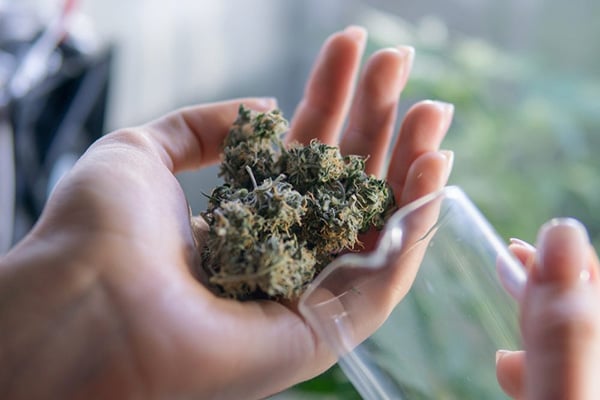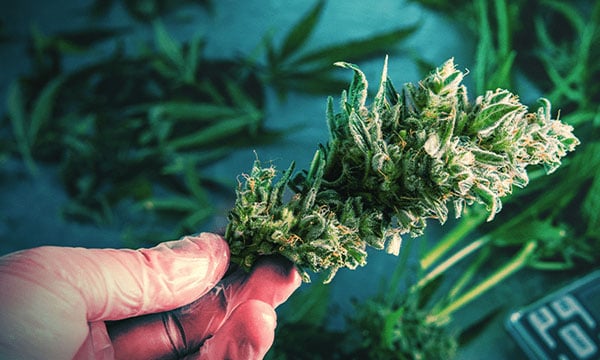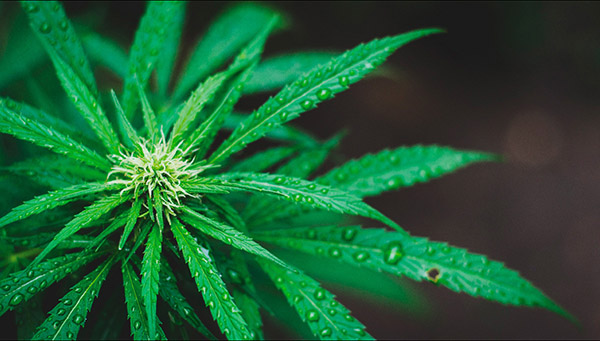What to do if your cannabis gets wet
What to do if your cannabis gets wet

It's not the end of the world if your cannabis gets wet, but you must know the best way to restore it. Here's how.
First, you want to ask whether wet or damp cannabis is suitable for smoking. Then look at the possible measures that should be taken to ensure the weed is still usable.
If you don't have most of this information yet, don't worry. This article covers the best ways to take care of wet or moist weeds.
What's the problem with wet weed?

When cannabis gets wet, it can pose some health risks to users. The primary forms of these health risks are related to damp weeds creating ideal conditions for mold spores.
Inhaling these mold spores or smoking wet weed can cause symptoms such as nausea, vomiting, and coughing. This behavior can also promote allergic reactions, with symptoms including wheezing, sinus pain, lung inflammation, etc.
Patients with cardiovascular diseases have weakened immune systems, and the risk of lung diseases increases when they inhale moldy spores. Therefore, users need to take good care of their herb before use.
What happens when cannabis gets wet?
A common question raised by cannabis users is whether cannabis will lose its effectiveness when it gets wet. Many people who accidentally spill water on their herb think it is ruined, so they throw it away. But this is not true.
The cannabinoids and terpenes that are responsible for the potency and flavor of cannabis strains are both insoluble in water. This means that the moisture in the plant will not make them lose their taste and effect. However, the growth of mold spores on weed will render it useless.
How to identify wet cannabis

Some weed samples may not appear very wet, but they are too moist for their intended use. Therefore, it is crucial to be able to identify such cannabis.
The easiest way to identify cannabis that is too wet is to use physical senses such as hands, eyes, and nose. When you touch a properly cured weed, it feels dry. The buds easily break when you bend them, and it feels crunchy as you grind it between your fingers and the calyx break apart.
Wet cannabis feels different and sticks together when you grind, while dry weed easily crumbles.
Wet cannabis can also be identified by the smell it emits. Cannabis that has been appropriately cured gives a strong, pungent aroma unique to the strain profile.
Wet cannabis tends to be more grassy. The unpleasant smell of ammonia can also identify the existence of mildew. Burning weeds can also be used to determine wet from dry weeds.
The dry cannabis will burn evenly, whereas the wet weed will not burn evenly and may be hard to ignite.
How to treat wet cannabis
Now that we have seen how to identify wet cannabis and the downsides of smoking it, we need to look at what can be done to treat it.
Below are some of the common steps that can be taken to deal with wet or damp cannabis and recover it for use.
Dry with rice
You may have heard how rice can be used to dry other things, such as wet cellphones, but it can also be used with cannabis. Rice is a suitable adsorbent and a great way to dry our damp weed.
You can easily put the cannabis on some paper and then immerse them in a container filled with rice. Leave the buds overnight, after which most of the water in them will be absorbed by the rice.
Dry in a cardboard box
Just like rice, cardboard is a good absorbent. You can put the wet cannabis on some cardboard to dry. Seal the cardboard in an air-tight container and wait for 8 hours or preferably overnight.
Dry with paper towels or paper bags.
Paper towels and paper bags are also good absorbents. For paper towels, wrap the hemp buds with different layers of paper towels. Store paper towels in a cool and dry place and wait for 4 to 8 hours to complete the drying process. The exact method can be repeated using paper bags.
Dry with humidity bags
Humidity bags help to maintain the pH value, and they can come in handy when used with curing jars to dry cannabis. They can help ensure that the buds reach the required dryness while maintaining their integrity. However, it is essential to note that they can only be used on cannabis that has been dried or cured before.
Drying in an oven or microwave
First of all, it must be stated that this method should only be used as a last resort. This is because it will affect the quality of the herb because extreme temperatures will affect the quality. For best results, first, preheat the oven to 120 degrees.
Cover a baking tray with some baking paper and place the herb in the center.
Place it in the oven and bake the weed until it becomes dry, and make sure to check it at the same time to avoid burning the weed. The time spent in the oven depends on how wet the cannabis was to start with.
Conclusion
Obviously, it's not the end of the world when your weed gets wet, but you must take appropriate actions to save it. Once you have determined that your weed is damp or too wet, you can easily use any of the methods listed above to dry it. It should be noted that to effectively dry your herb. You will need to adopt the appropriate drying methods and techniques.
